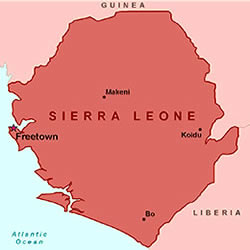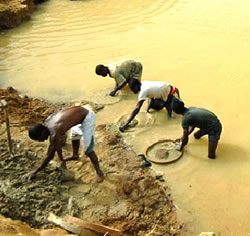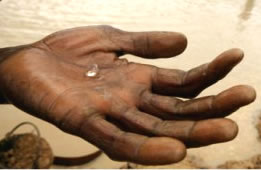Sierra Leone's Diamonds
History of Sierra Leone

West Africa stands out as a key source of diamonds globally. These gemstones have gained a notorious reputation for financing conflicts and sparking international worry. Sierra Leone, a nation in West Africa, carries the marks of a prolonged civil war. It started as a trading post before being claimed by the British, achieving independence in 1961. Following a period of democratic governance, growing tensions sparked a civil war. From 1991 to 2002, the illicit diamond trade from Sierra Leone to Liberia played a big role in sustaining the conflict. Even with its riches in diamonds, titanium, gold, bauxite, and rutile, much of the population lives in poverty.
Freetown: The Capital City
The capital of Sierra Leone is Freetown. Its expansive natural harbor, where the Sierra Leone River Estuary joins the Atlantic Ocean, positions this resource-rich country well for global trade. This same feature that enabled so much to be extracted from Sierra Leone historically might now help restore some prosperity. It all began when the capital was founded as the "Province of Freedom" in 1787 by the British, aimed at resettling freed African American slaves from diverse African origins. Freetown boasts white sand beaches on one side and verdant mountains on the other. It's a vibrant, colorful city serving as the nation's educational, economic, and political center. You can almost feel the energy buzzing through its streets.
Diamond Mining Techniques

Diamonds get extracted through various methods. One approach is open-pit mining, involving digging a massive hole in the ground to remove and process diamond-bearing material. This works best for shallow deposits. Underground mining, on the other hand, relies on tunnels beneath the surface and can follow open-pit operations if the deposit justifies it. Some diamonds come from the ocean floor, either by drilling into the seabed or scooping up surface gravels. Finally, alluvial mining happens when rivers carry diamond deposits before they hit the sea - also known as placer mining. Alluvial methods can be done with basic tools, and it's thought that most such mining in Sierra Leone was handled by small-scale artisanal workers before the Kimberley Process came into effect.
Diamond Production in Sierra Leone
Diamond mining in Sierra Leone dates back to the 1930s, with alluvial techniques being the primary method. The key mining zones are in the east and southeast, especially Kono District, which yields more diamonds than elsewhere in the country. Until recently, most operations were small-scale, but larger firms have stepped in, navigating issues like unreliable electricity, poor transport, and sanitation challenges.
Notable Diamond Discoveries

An incredible find occurred in 1943 in Koidu, the capital of Kono District: a 770-carat diamond pulled from river gravel. This held the record as the largest alluvial diamond until the 968.9-carat "Star of Sierra Leone" surfaced 25 years later, also in Koidu. If you visit Kono today, it has that classic gold-rush vibe - the roads aren't paved yet, and it's still developing. The dusty, potholed streets reflect its diamond mining legacy, but the area is gradually recovering from civil war damage.
Challenges and Future Prospects
While diamond output and long-term economic potential look encouraging, the 2015 iron ore price slump brought setbacks. Sierra Leone grapples with more than its share of global issues: elevated maternal and infant death rates, Ebola outbreaks, joblessness, and infrastructure wrecked by war. It's tough to picture full recovery sometimes. But hey, hope springs from tough spots, and for Sierra Leone, daily life pushes forward. For many without jobs, sifting through soil for diamonds or gold is their main shot at income. Things are shifting bit by bit; political steadiness and reforms attract overseas investors, whose jobs provide a fresh alternative. As prosperity grows, the incoming funds should help rebuild what was harshly stripped from the nation.
Frequently Asked Questions
What role did diamonds play in Sierra Leone's civil war?
The illegal trade of diamonds from Sierra Leone to Liberia helped fund the civil war from 1991 to 2002, earning them the label of conflict or blood diamonds.
How are diamonds primarily mined in Sierra Leone?
The main method is alluvial mining, where diamonds are extracted from river deposits using simple tools, often by artisanal miners.
What is the largest diamond found in Sierra Leone?
The 968.9-carat "Star of Sierra Leone" discovered in 1972 in Koidu holds that record, surpassing the earlier 770-carat find from 1943.
Is diamond mining still a major activity in Sierra Leone?
Yes, it continues, with both small-scale artisanal operations and larger companies involved, especially in areas like Kono District.
What challenges does Sierra Leone face despite its mineral wealth?
The country deals with poverty, high mortality rates, disease outbreaks like Ebola, unemployment, and damaged infrastructure from past conflicts.

